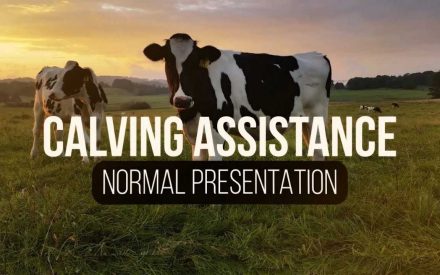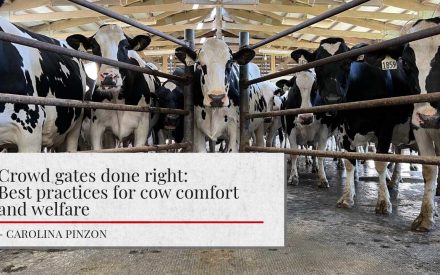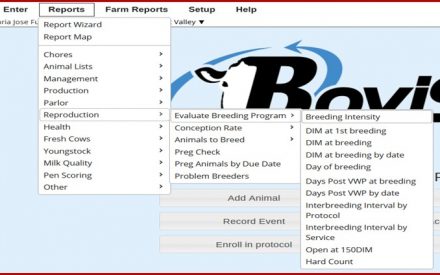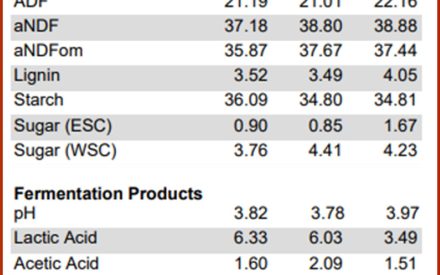This article was originally published in The Wisconsin State Farmer
Be aware of the approaching winter weather which may bring added stress to cattle. Cattle can be tolerant of cold conditions, although extreme cold temperatures combined with wind, rain, and snow may bring added challenges to the health and well-being of cattle not only on the farmstead but during transport as well.
Be vigilant
Weather is unpredictable. Unexpected drops in temperature and/or increases in wind speed may occur within a few hours. Wind speed greatly affects the danger to animals regarding cold temperatures. It is the handler’s responsibility to keep a watchful eye on the weather and be aware of cold weather warnings, watches, and advisories.
When transporting cattle, be aware of the cold temperature and wind speed affecting the trailer. When the cattle trailer is not moving there may not be a wind factor, for example during loading and unloading. However, handlers must remember when they are hauling cattle in winter a moving trailer adds wind chill and it can become especially cold in the trailer.
Danger zones
The chart below shows the increasing danger zones for animals when taking wind speed and temperature into consideration. Zone 1 poses little danger to mature animals. Zone 2 shows increasing danger conditions to animal’s flesh, teats, and scrotums. Zone 3 is the greatest danger zone, especially to young animals.
Source: David Hartman, author PennState Extension Educator, Livestock
Using the chart above, a truck moving 45 miles an hour when the outside temperature is 22 degrees F is analogous to a wind chill of -22 degrees F for animals with no wind protection. Handlers can block some of the trailer vents when wind chill is a factor. However keep in mind, the trailer must have ventilation outlet for the warm air coming off the cattle. If there is no ventilation the trailer will become too steamy and the cattle could become sick due to the moist air locked inside the trailer.
Transportation considerations
During times of extreme cold, animals showing signs of being compromised should not be transported. This includes cows close to calving, young animals, sick, weak, injured, or any other compromised condition. Any animal which is non-ambulatory, too weak to move, or may go down in the trailer, should not be transported at any time.
Animals forced to stand close to the cold sides of the trailer are at risk, so give all the animals in the trailer adequate room to reposition. Remember the coldest part is the back of the trailer.
Wet animals lose the insulating ability from their hair coat and are at a higher risk than dry animals. Therefore, watch for freezing rain or snow blowing into the trailer which may wet animals during transport.
Try to transport animals during the warmest time of the day. Make sure animals have good footing to avoid going down inside the trailer. A dry straw pack would add some needed warmth and footing.
Leave time to stop and check the animals during transport.
Leave time to stop and check the animals during transport. Watch animals for signs of cold stress. These signs include: trembling, shivering, lethargy, stiffness, reluctance to move, and fluids frozen on the face or nostrils.
To avoid emergency issues, haulers should check their trucks and trailer before loading the cattle and heading down the road. Make sure everything is secure and in working order. Make a point to check the tires, lights, latches, axels, springs, and flooring.
When loading, work calmly and group cattle according to age, size, or special needs inside the trailer. To prevent bruising during transport, partition all horned animals away from dehorned animals. Remember even small nub horns can cause bruising of meat on animals and upon harvesting bruised meat needs to be cut out and thrown away.
Haulers should remember to slow down around curves, and when starting or stopping to avoid jostling the animals and to prevent turnovers. Check the road and weather conditions for the route to prevent any unexpected challenges.
When temperatures drop this winter remember to consider the cold temperature and wind chill factor when transporting cattle. The eye of the master along with good judgment will prevent hypothermia, frostbite, or even the death of animals.

 ▶️ Watch: Calving Assistance-Normal Presentation in Cattle (2 of 4)
▶️ Watch: Calving Assistance-Normal Presentation in Cattle (2 of 4) Crowd gates done right: Best practices for cow comfort and welfare
Crowd gates done right: Best practices for cow comfort and welfare Using Bovisync Reports to Assess Potential Impact of Heat Stress on a Dairy - Coding Supplement
Using Bovisync Reports to Assess Potential Impact of Heat Stress on a Dairy - Coding Supplement Using lab tests to estimate forage stability and fermentation efficiency
Using lab tests to estimate forage stability and fermentation efficiency


